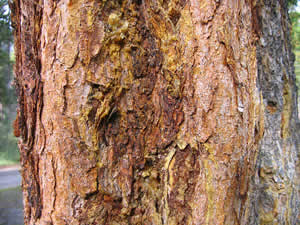
Courtesy of PaulCJ56/Flickr www.flickr.com
- Coming soon to a rest area near you: Yellowcake uranium, a low-risk form of hazmat
- Garfield County continues to debate resolution on DeGette's FRAC Act
- Can uranium mining, tourism and outdoor recreation coexist in Montrose County?
- Telluride residents rally against proposed uranium mill in Montrose County
- Heavy hitters Udall, Denver Water, USFS get behind Vail biomass power plant concept
- Natural gas drilling to keep moving closer to nuclear blast site near Rulison
- School of Mines professor says gas industry tried to get him fired for controversial comments
- Vail Valley Medical CEO Cassin resigns
- Polar exploration company Quark Expeditions signs on as major sponsor of Vail Valley Foundation
- Shaw Cancer Center in Edwards unveils new PET/CT scanner
- All Real Biz Articles
February 13, 2009 — Forest Service scientists have been hard at work conducting a study concluding a nice cup of herbal tea may be the best way to soothe Colorado’s ailing lodgepole pine forests, where bark beetles have killed millions of acres over the last decade.
Actually, small flakes of the pheromone verbenone, found in rosemary and walnut husks and used in herbal teas, could be spread from helicopters, duplicating a pheromone the beetles distribute to signal each other that an infected tree is overpopulated and it’s time to move on.
The study found that spreading verbenone can cut the number of trees infected by the voracious, rice-sized beetle by two-thirds and reduce the cost of treating an acre of trees to $100, compared to $1,000 an acre for thinning projects.
Problem is, it’s too late in Colorado, where upward of 2 million acres of lodgepole pines, stressed by rising temperatures and ongoing drought, have already been killed by the beetles.
The only practical application for the new treatment would be saving mature trees in and around mountains towns, ski areas, campgrounds and other aesthetically pleasing places where dead trees tend to be kind of a downer for the tourists.
Andy Stahl, director of Forest Service Employees for Environmental Ethics, told the Associated Press it would be pointless to use the technique across large areas, because it's all part of a natural cycle and the trees are going to die anyway.
"All you are doing is saving (commercially) worthless trees in order that they burn next year," he said.
Ski resorts have basically thrown in the towel and are just trying to save key islands of trees between trails while thinning to promote new growth and create defensible spaces for firefighters to battle the inevitable wildfires.
Lodgepole pines only live about 80 to 100 years anyway, and decades of fire suppression have left a uniformly old and dying forest anyway, beetles or not. Sprinkle in the effects of global warming, with temps never dropping low enough to kill off the bugs in recent years, and you’ve got a full-blown epidemic.
Others have suggested innovative ways to save pockets of key trees, such as injecting chemicals via tree IV’s, but the bottom line is that the beetles have won the war and even herbal tea can’t cure these sickly trees.
![]() Comment on "New Forest Service study finds it might be tea time for mountain pine bark beetles" using the form below
Comment on "New Forest Service study finds it might be tea time for mountain pine bark beetles" using the form below












